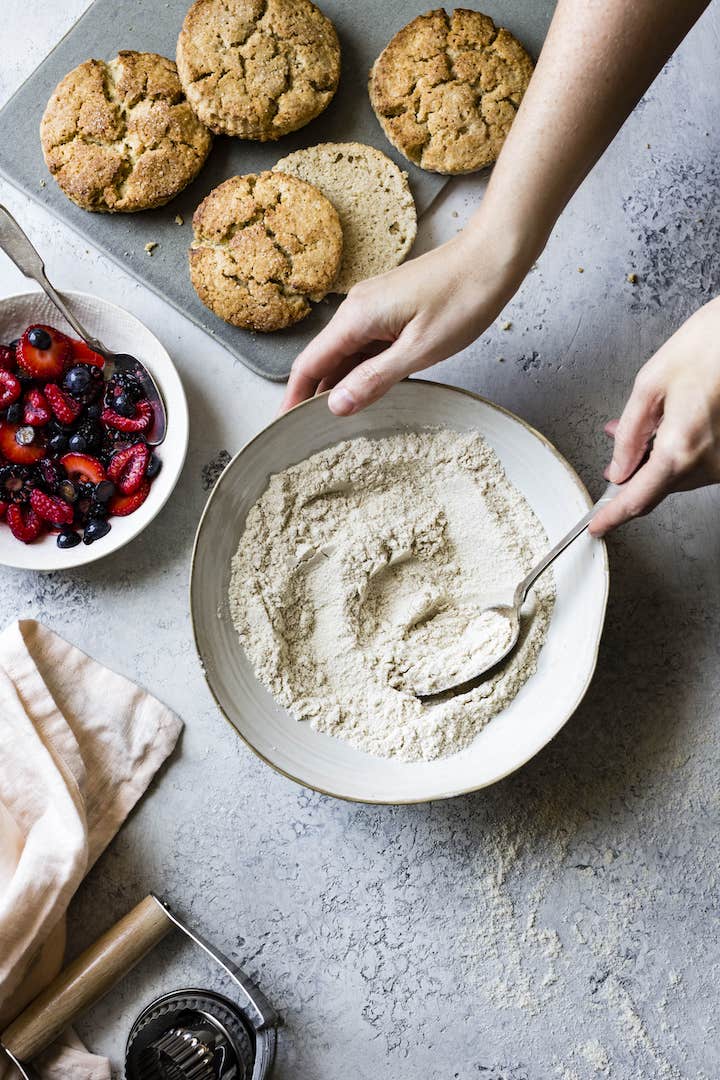Baking with Sorghum Flour

What is sorghum flour? How do you use it? What does it taste like? More than just a staple in gluten-free all-purpose flour blends, sorghum flour has a mildly grassy, earthy flavor and a texture that, when blended with other flours, helps keep baked goods extra tender. Here we share more information about sorghum flour, and Alanna Taylor-Tobin brings us three delicious, seasonal recipes that demonstrate this ancient grain’s baking magic.
Photography Alanna Taylor-Tobin
What is Sorghum Flour?
Sorghum flour (a.k.a. milo flour or sweet white sorghum flour) is a mild-flavored ancient grain from southern Egypt. Naturally sweet, it was often boiled into a syrup called sorghum molasses and was popular in the southern United States before the rise of corn syrup. Today, sorghum is reestablishing itself as a nourishing whole grain that can be cooked and eaten like quinoa, and its flour is frequently used in gluten-free all-purpose flour blends thanks to its chameleon-like flavor. Sorghum flour can bake up with a brittle, sandy texture like that of brown rice flour, so it works best when combined with softer flours, such as sweet rice, oat, and tapioca.
Flavor: Earthy, grassy, mild, slightly sweet
Feel: Fine, slightly sandy
Nutrition: High in antioxidants (more per serving than blueberries and pomegranate) as well as fiber, protein, unsaturated fat, phosphorus, calcium, potassium, and iron
Availability: Stocked with alternative flours at health foods stores and well-stocked grocers or online
Storage: Airtight at cool room temperature for up to 6 months
Recipes with Sorghum Flour
Want to Make Some Recipes Using Sorghum Flour? Try these!
Chocolate Cherry Skillet Cookie Gluten-Free Recipe
Brown Sugar Peach Upside-Down Cake Gluten-Free Recipe
Berry Shortcakes with Whipped Crème Fraîche Gluten-Free Recipe




